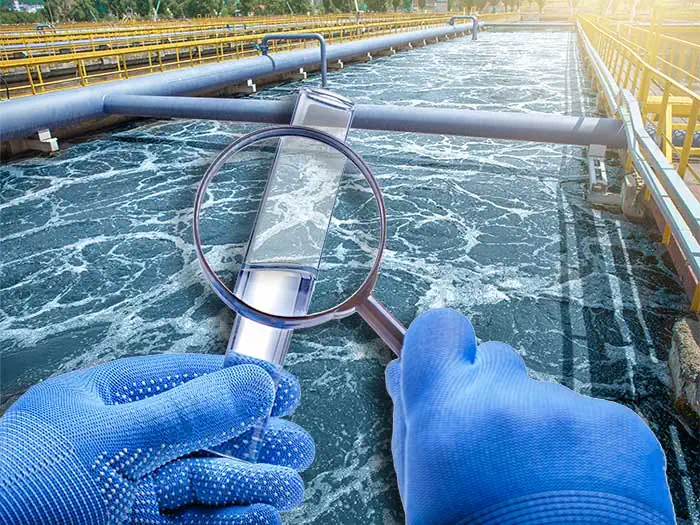M270 PFAS Treatment for Eco-Friendly Waste Management
Innovative PFAS Therapy Solutions for Safer Water
The raising prevalence of PFAS contamination in water materials necessitates a crucial evaluation of ingenious therapy remedies. Advanced filtration technologies and novel chemical treatments present encouraging avenues for reducing these relentless contaminants. Additionally, arising bioremediation strategies provide a more lasting method to tackling PFAS obstacles. As governing frameworks proceed to adjust, recognizing the effectiveness and scalability of these options comes to be paramount. What ramifications do these developments hold for public health and wellness and ecological reconstruction, and just how can stakeholders successfully implement them in varied contexts?
Review of PFAS Contamination
PFAS contamination has actually emerged as a substantial environmental and public health worry. Per- and polyfluoroalkyl substances (PFAS) are a group of artificial chemicals recognized for their perseverance in the atmosphere and human body, leading them to be commonly described as "forever chemicals." These compounds have actually been widely used in numerous sectors, consisting of firefighting foams, water-repellent fabrics, and food packaging, largely because of their water- and grease-resistant homes.
The extensive usage of PFAS has actually resulted in their discovery in dirt, water products, and even in the blood of people and animals. Research studies have linked PFAS exposure to numerous wellness issues, consisting of developmental results in infants, immune system disorder, and numerous kinds of cancer cells. In addition, the ecological perseverance of these compounds complicates their degradation and elimination, elevating problems concerning long-lasting ecological effects.
Regulatory bodies are progressively executing rigid guidelines to monitor and decrease PFAS levels in alcohol consumption water and other ecological tools. As awareness of PFAS contamination expands, it has come to be important for communities and sectors to look for efficient treatment remedies to alleviate exposure and guard public health and wellness.
Advanced Filtration Technologies
As the seriousness to attend to PFAS contamination heightens, advanced filtering modern technologies have arised as a pivotal element in the removal efforts focused on getting rid of these persistent chemicals from water resources. These modern technologies take advantage of innovative mechanisms to successfully target and capture PFAS compounds, which are notoriously immune to standard therapy methods.
Among one of the most promising strategies is using granular turned on carbon (GAC), which adsorbs PFAS molecules because of its high surface and porous structure. This technique has actually been widely executed in both local and commercial settings, showing significant reductions in PFAS concentrations. Furthermore, ion exchange materials have gotten grip, especially designed to precisely bind PFAS ions from water, hence promoting their removal.
Membrane layer filtration innovations, such as reverse osmosis and nanofiltration, also show efficiency in PFAS removal by physically separating contaminants from water - pfas management. These systems can accomplish high degrees of pureness, making them ideal for alcohol consumption water applications
Chemical Therapy Technologies
Numerous chemical treatment developments are being checked out to successfully attend to PFAS contamination in water products. One encouraging strategy entails using innovative oxidation procedures (AOPs), which make use of effective oxidants such as browse around here ozone, hydrogen peroxide, or chlorine dioxide incorporated with UV light to damage down PFAS substances into less harmful materials. This method has shown efficiency in research laboratory setups, showing possible for scalability in real-world applications.
An additional cutting-edge strategy is the development of ion-exchange materials particularly developed to target PFAS. These resins can selectively adsorb PFAS substances from water, allowing for their elimination during treatment processes. Recent improvements have boosted the performance and capability of these materials, making them a positive choice for water treatment centers.
Furthermore, researchers are exploring using chemical agents like persulfate and ferrous ions to boost the deterioration of PFAS in contaminated water. These representatives can cause chain reaction that promote the malfunction of persistent PFAS substances.
Emerging Bioremediation Strategies
Recent advancements in chemical therapy advancements have actually paved the method for exploring bioremediation strategies as a practical choice for dealing with PFAS contamination. Bioremediation harnesses the natural metabolic procedures of bacteria to degrade or change toxins, making it an attractive approach for taking on consistent impurities like PFAS.
Arising techniques in bioremediation consist of using genetically engineered microbes that can especially target and damage down PFAS substances. These microbial stress are being created for their enhanced deterioration capacities, enhancing the efficiency of the remediation procedure. In addition, researchers are checking out the view it potential of plant-assisted bioremediation, where certain plant types might uptake and withdraw PFAS from contaminated dirt and water.
An additional promising method is the application of bioaugmentation, which includes presenting advantageous bacteria right into infected environments to increase the deterioration of PFAS. This technique can promote much faster removal timelines and improve general efficiency.

Regulatory Frameworks and Specifications
A thorough governing structure is essential for efficiently handling PFAS contamination and making sure public health security. The enhancing recognition of per- and polyfluoroalkyl compounds (PFAS) useful content as toxic wastes has actually triggered different federal and state companies to establish requirements that control their existence in water materials. The United State Epa (EPA) has actually established health and wellness advisories and is pursuing setting enforceable limits for PFAS in alcohol consumption water.
State-level laws differ dramatically, with some states taking on more stringent guidelines than those proposed by the EPA. These regulations usually include maximum impurity degrees (MCLs) for particular PFAS compounds, monitoring needs, and reporting commitments for water utilities. Additionally, arising structures concentrate on the remediation of polluted sites, highlighting the need for reliable therapy innovations.

Final Thought
To conclude, the advancement and implementation of innovative PFAS therapy options are crucial for dealing with the pervasive issue of water contamination. Advanced purification modern technologies, chemical treatments, and emerging bioremediation strategies collectively present a complex strategy to successfully minimize and break down PFAS levels. As regulative structures continue to evolve, incorporating these innovations will be vital to guard public health and wellness and restore the integrity of infected water sources, inevitably adding to a cleaner and more secure atmosphere.